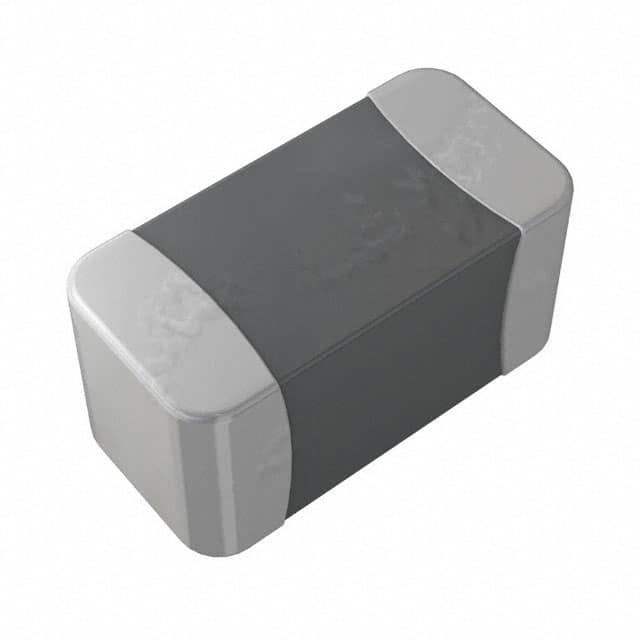Xem thông số kỹ thuật để biết chi tiết sản phẩm.

NTCG164BH222JTDS
Product Overview
Category
NTCG164BH222JTDS belongs to the category of NTC thermistors.
Use
It is commonly used for temperature sensing and control in various electronic devices and systems.
Characteristics
- Temperature Sensing: NTCG164BH222JTDS exhibits a negative temperature coefficient, meaning its resistance decreases with increasing temperature.
- High Precision: This thermistor offers high accuracy in temperature measurement.
- Stability: It provides stable performance over a wide temperature range.
- Small Size: The compact size makes it suitable for integration into small electronic devices.
- Fast Response: NTCG164BH222JTDS responds quickly to changes in temperature.
Package
The NTCG164BH222JTDS is typically available in a small, cylindrical package.
Essence
The essence of NTCG164BH222JTDS lies in its ability to accurately sense and respond to temperature changes, making it an essential component in temperature control applications.
Packaging/Quantity
It is commonly packaged in reels or trays, with quantities varying based on manufacturer specifications.
Specifications
- Resistance Value: 2.2kΩ at 25°C
- Tolerance: ±5%
- Operating Temperature Range: -40°C to 125°C
- Maximum Power Rating: 200mW
- Thermal Time Constant: 7s (maximum)
Detailed Pin Configuration
NTCG164BH222JTDS typically has two leads, with the pinout configuration as follows: 1. Pin 1: Connected to one end of the thermistor element 2. Pin 2: Connected to the other end of the thermistor element
Functional Features
- Temperature Sensing: Accurately measures temperature changes.
- Temperature Compensation: Can be used to compensate for temperature variations in electronic circuits.
- Reliable Performance: Provides consistent and reliable temperature measurements.
Advantages and Disadvantages
Advantages
- High precision temperature sensing
- Compact size
- Fast response time
- Wide operating temperature range
Disadvantages
- Limited tolerance range
- Sensitivity to mechanical stress
Working Principles
NTCG164BH222JTDS operates based on the principle of the negative temperature coefficient of resistance. As the temperature increases, the resistance of the thermistor decreases, allowing it to effectively sense and respond to temperature changes in its environment.
Detailed Application Field Plans
NTCG164BH222JTDS finds application in various fields, including: - Consumer Electronics: Used in smart thermostats, HVAC systems, and appliances for temperature control. - Automotive: Employed in automotive climate control systems and battery management systems. - Medical Devices: Utilized in medical equipment for temperature monitoring and regulation. - Industrial Automation: Integrated into industrial machinery for temperature sensing and control.
Detailed and Complete Alternative Models
Some alternative models to NTCG164BH222JTDS include: - NTCG164BH103JTDS - NTCG164BH333JTDS - NTCG164BH473JTDS - NTCG164BH104JTDS
In summary, NTCG164BH222JTDS is a versatile NTC thermistor known for its high precision temperature sensing, compact size, and reliable performance. Its wide range of applications and availability of alternative models make it a popular choice in various industries.
Word count: 464
Liệt kê 10 câu hỏi và câu trả lời thường gặp liên quan đến ứng dụng NTCG164BH222JTDS trong giải pháp kỹ thuật
What is the NTCG164BH222JTDS?
- The NTCG164BH222JTDS is a type of NTC thermistor, which is a temperature-sensitive resistor used in various electronic applications.
What are the typical applications of NTCG164BH222JTDS?
- The NTCG164BH222JTDS is commonly used in temperature sensing, temperature compensation, and temperature control circuits in electronic devices and systems.
What is the resistance value of NTCG164BH222JTDS at room temperature?
- The resistance value of NTCG164BH222JTDS at room temperature is 2.2 kΩ.
How does NTCG164BH222JTDS behave with changes in temperature?
- NTCG164BH222JTDS exhibits a negative temperature coefficient, meaning its resistance decreases as the temperature increases.
What is the operating temperature range of NTCG164BH222JTDS?
- The operating temperature range of NTCG164BH222JTDS is typically from -40°C to 125°C.
Can NTCG164BH222JTDS be used for over-temperature protection?
- Yes, NTCG164BH222JTDS can be used for over-temperature protection in electronic circuits and systems.
What are the key characteristics of NTCG164BH222JTDS that make it suitable for technical solutions?
- Some key characteristics include high accuracy, fast response time, and stability over a wide temperature range.
Is NTCG164BH222JTDS suitable for battery temperature monitoring?
- Yes, NTCG164BH222JTDS is suitable for battery temperature monitoring due to its precise temperature sensing capabilities.
Can NTCG164BH222JTDS be used in automotive applications?
- Yes, NTCG164BH222JTDS is suitable for automotive applications such as engine temperature monitoring and climate control systems.
Are there any precautions to consider when using NTCG164BH222JTDS in technical solutions?
- It's important to ensure proper thermal management and avoid exceeding the maximum power ratings to prevent self-heating and potential performance issues.

